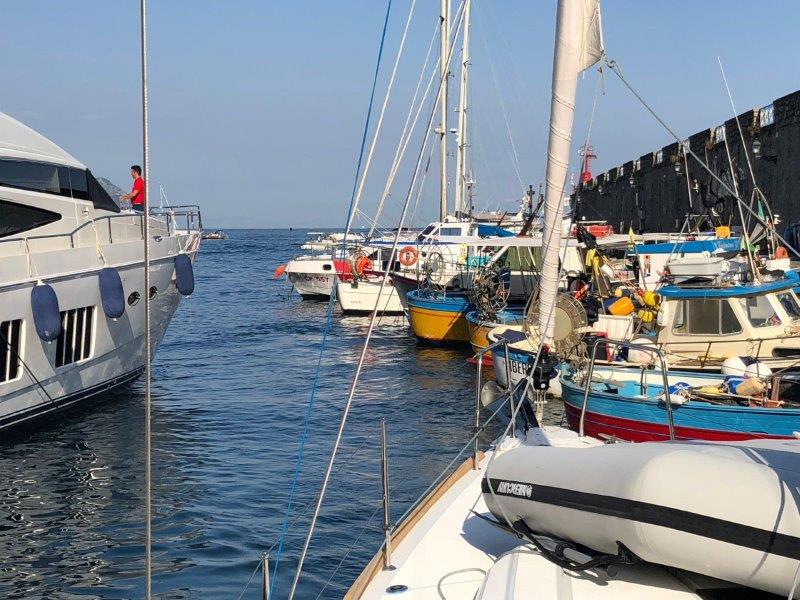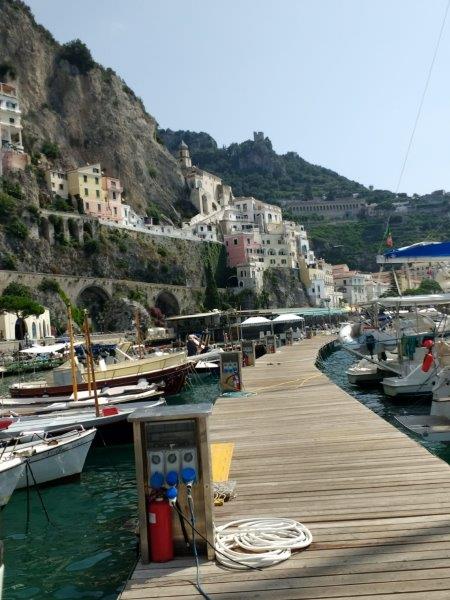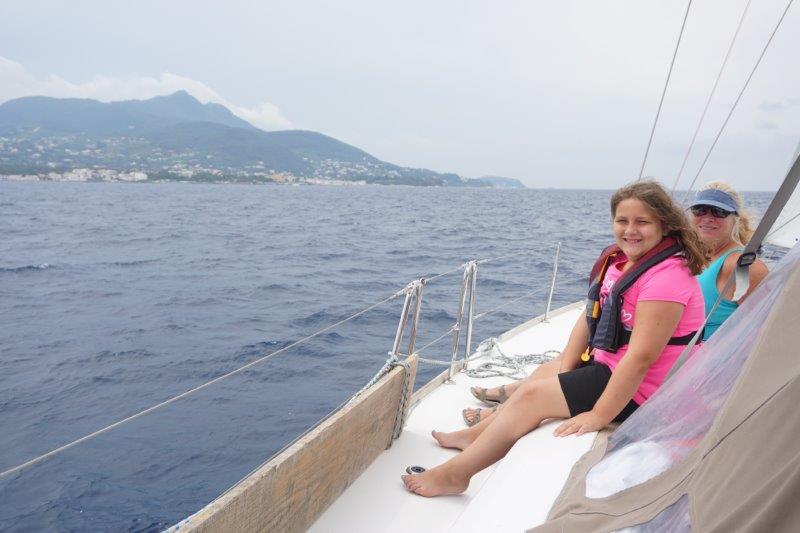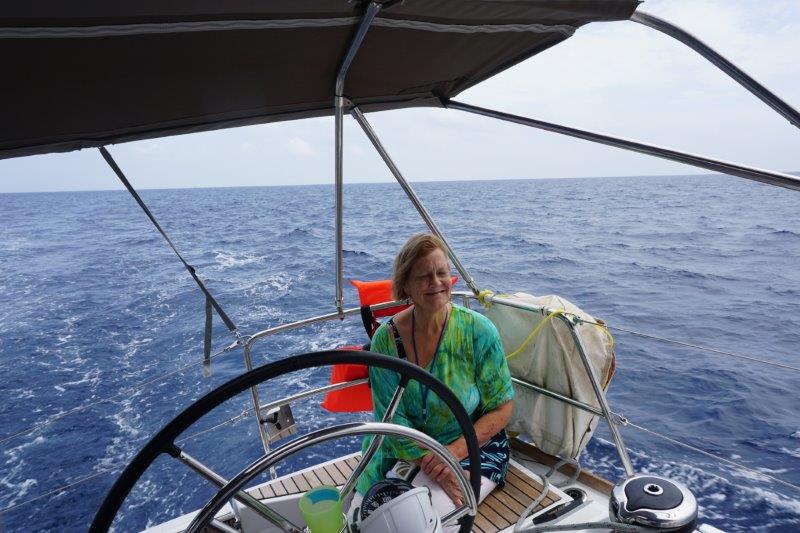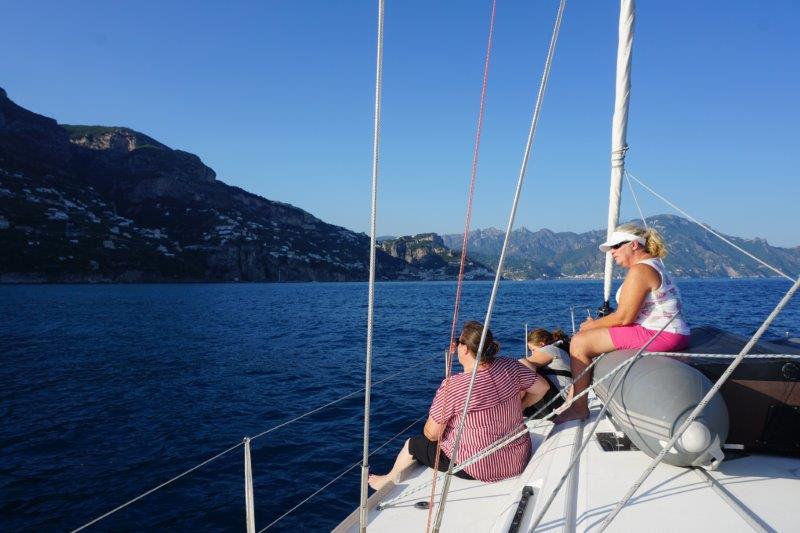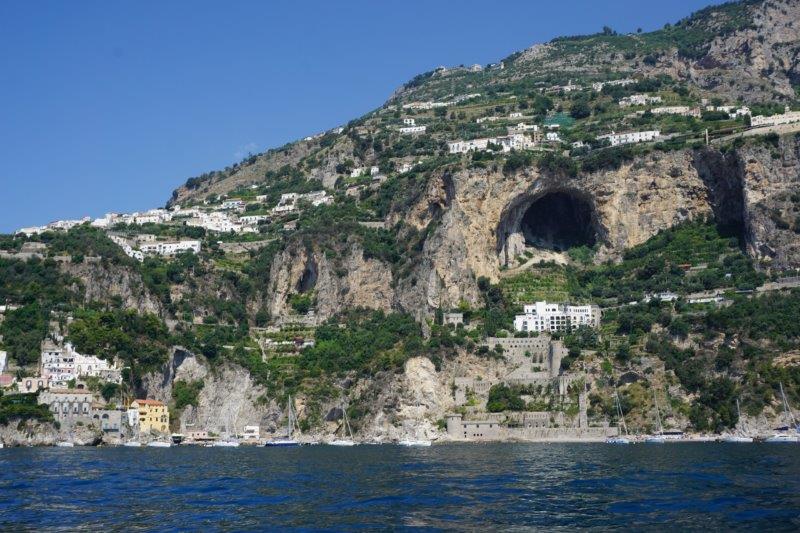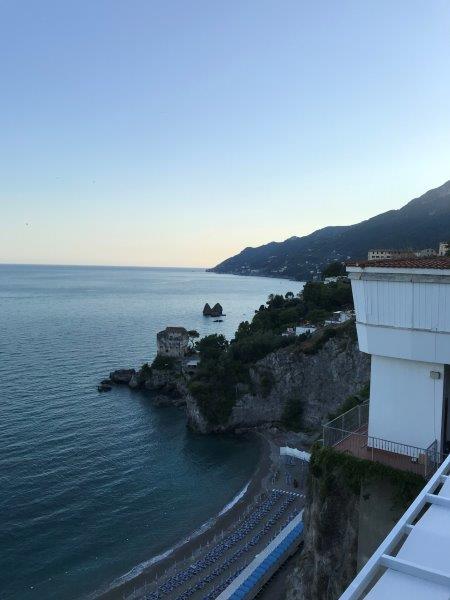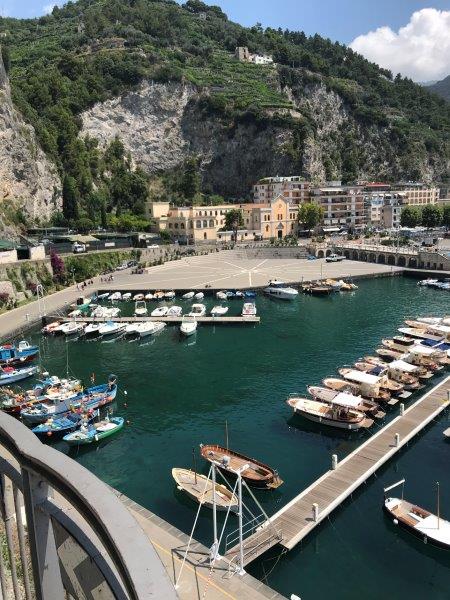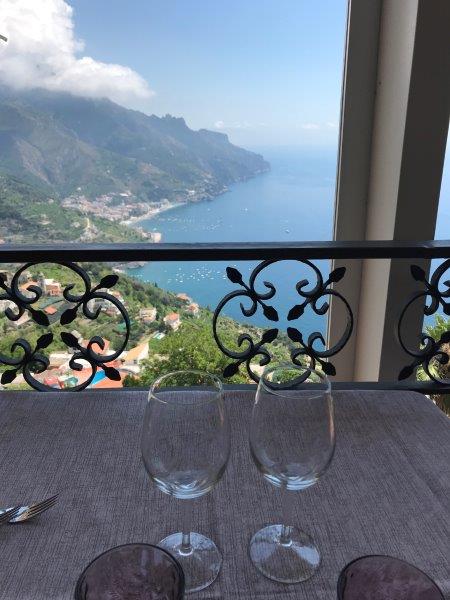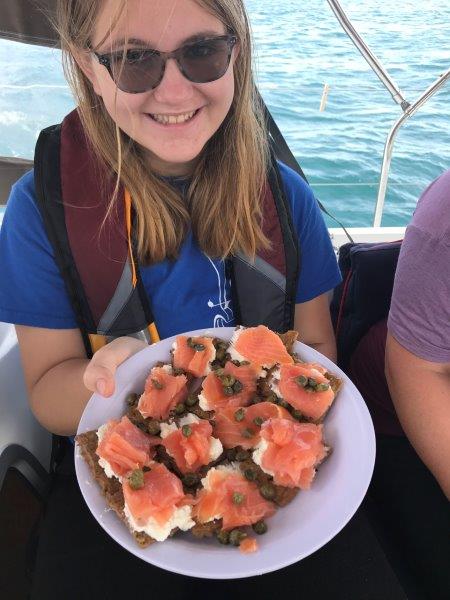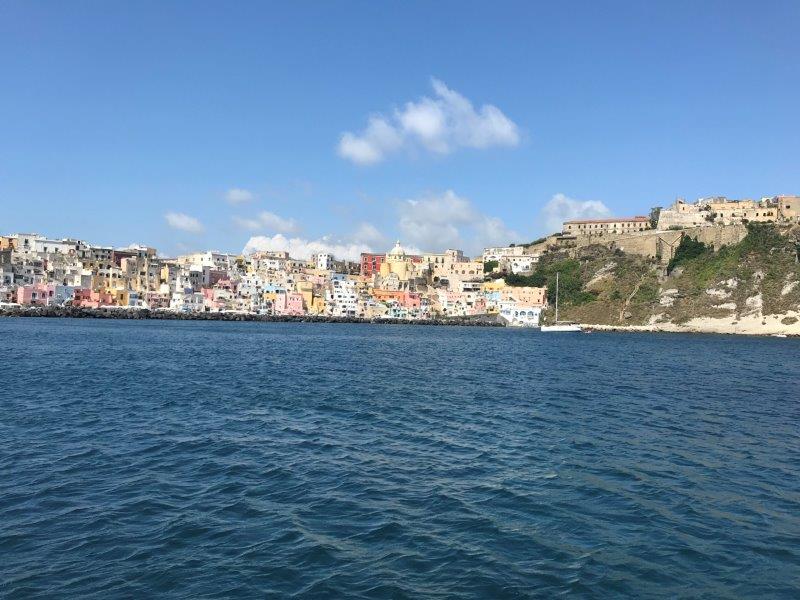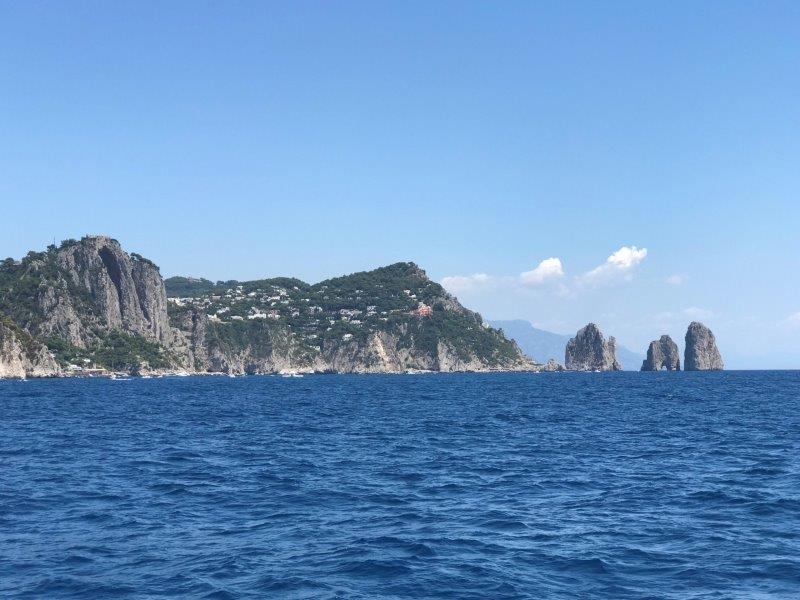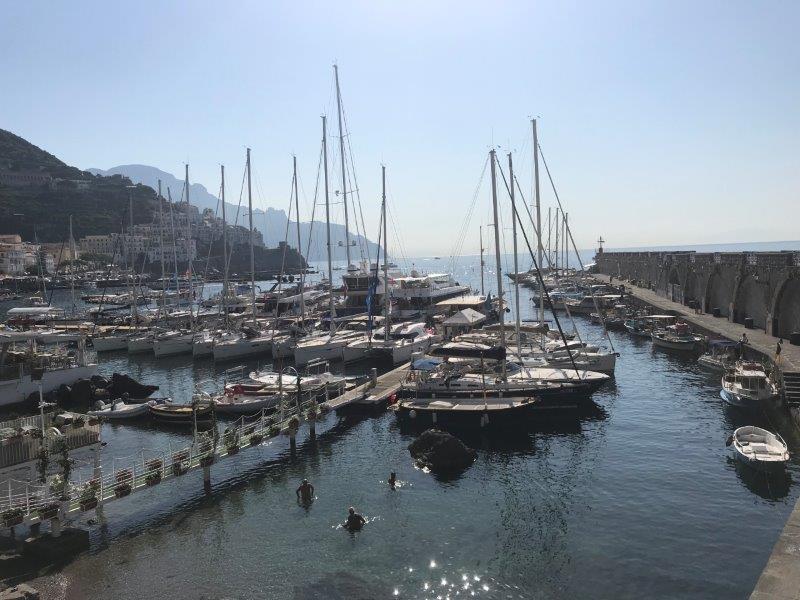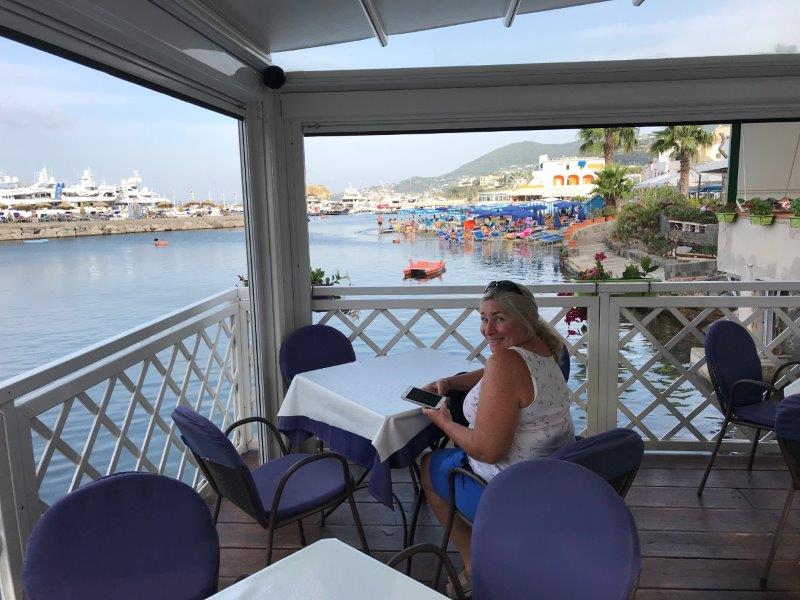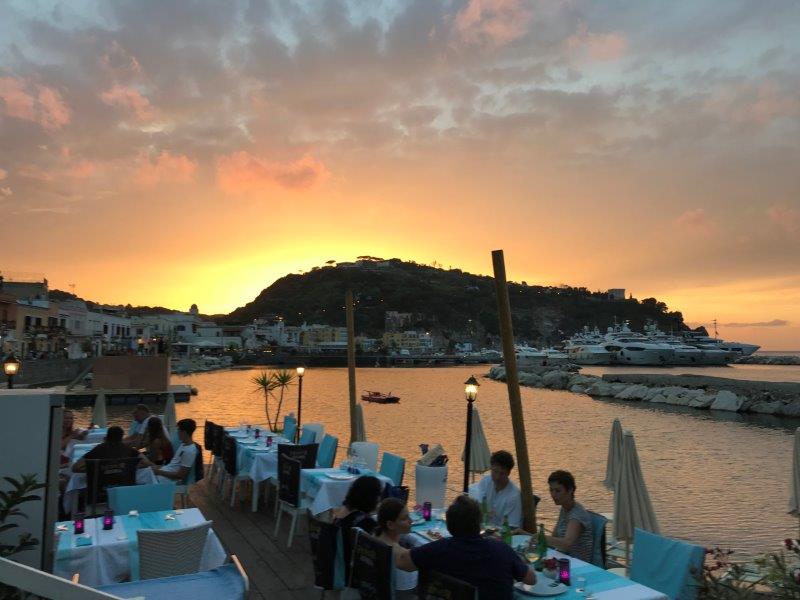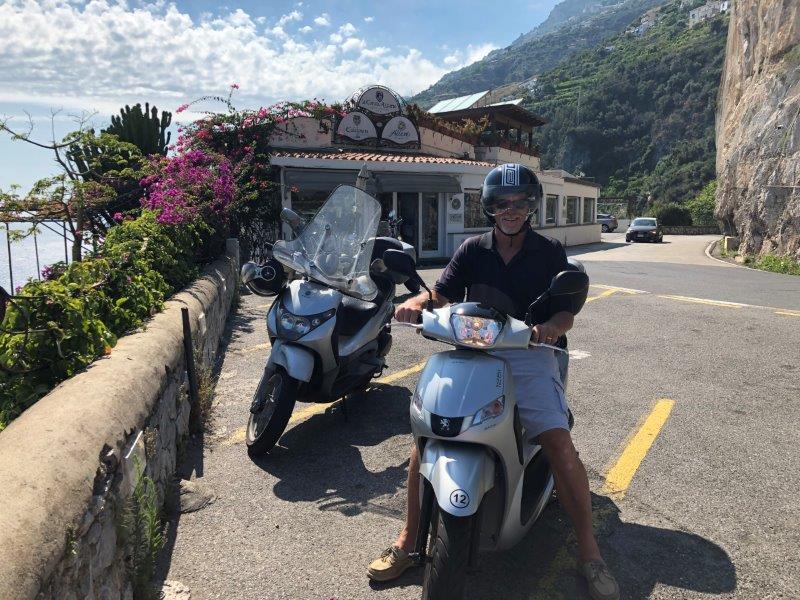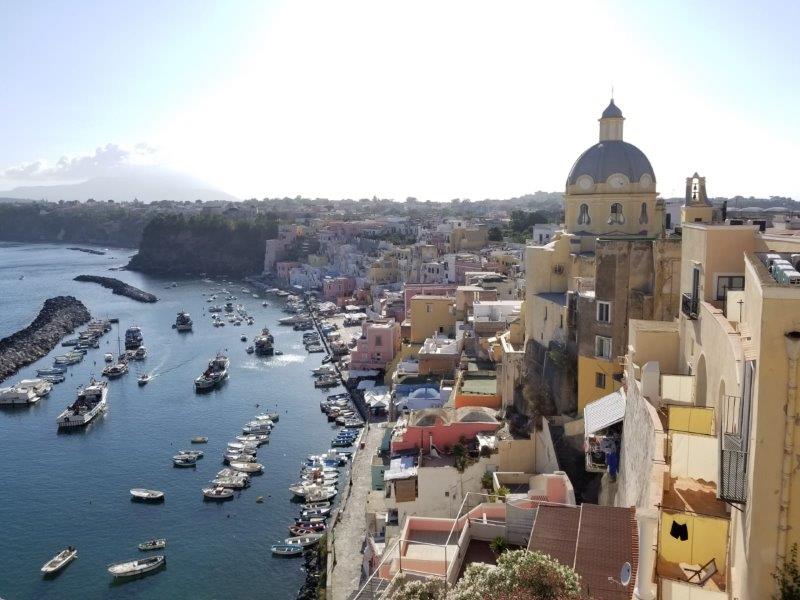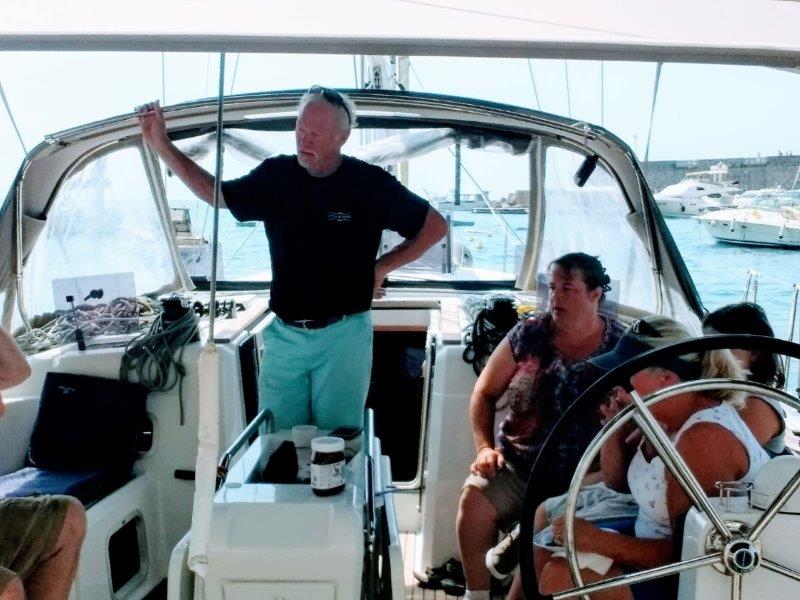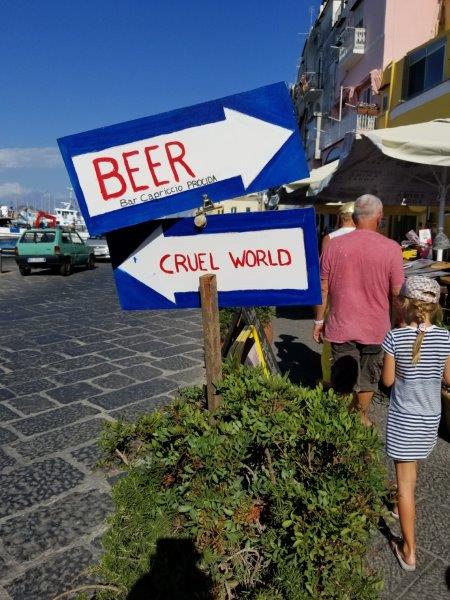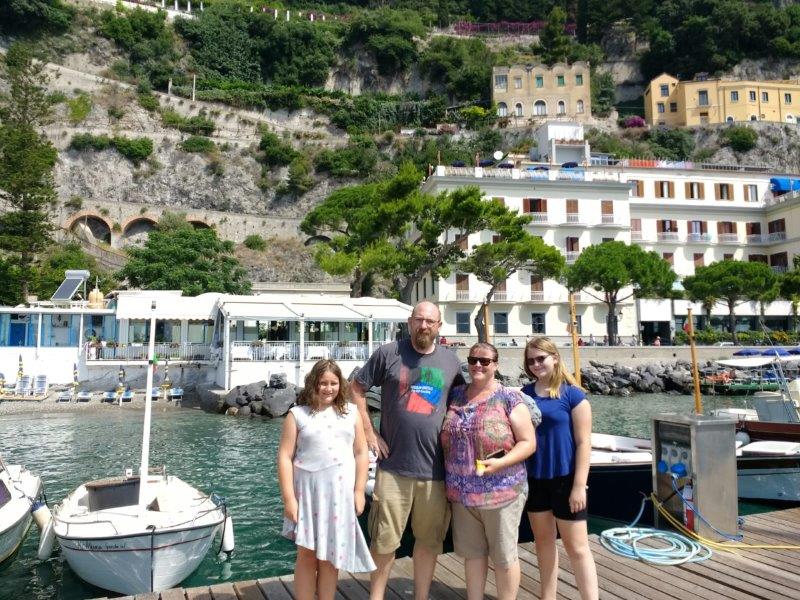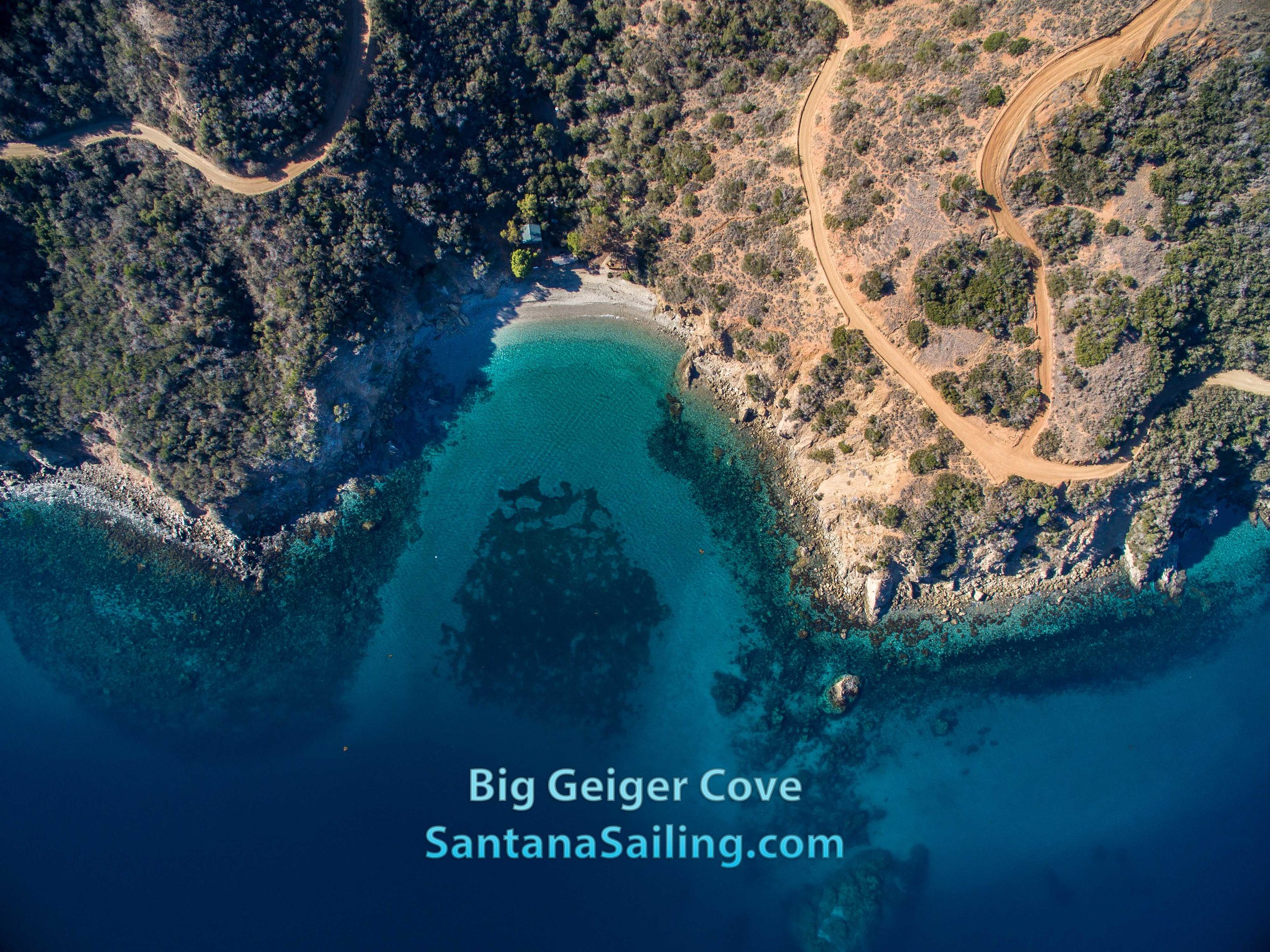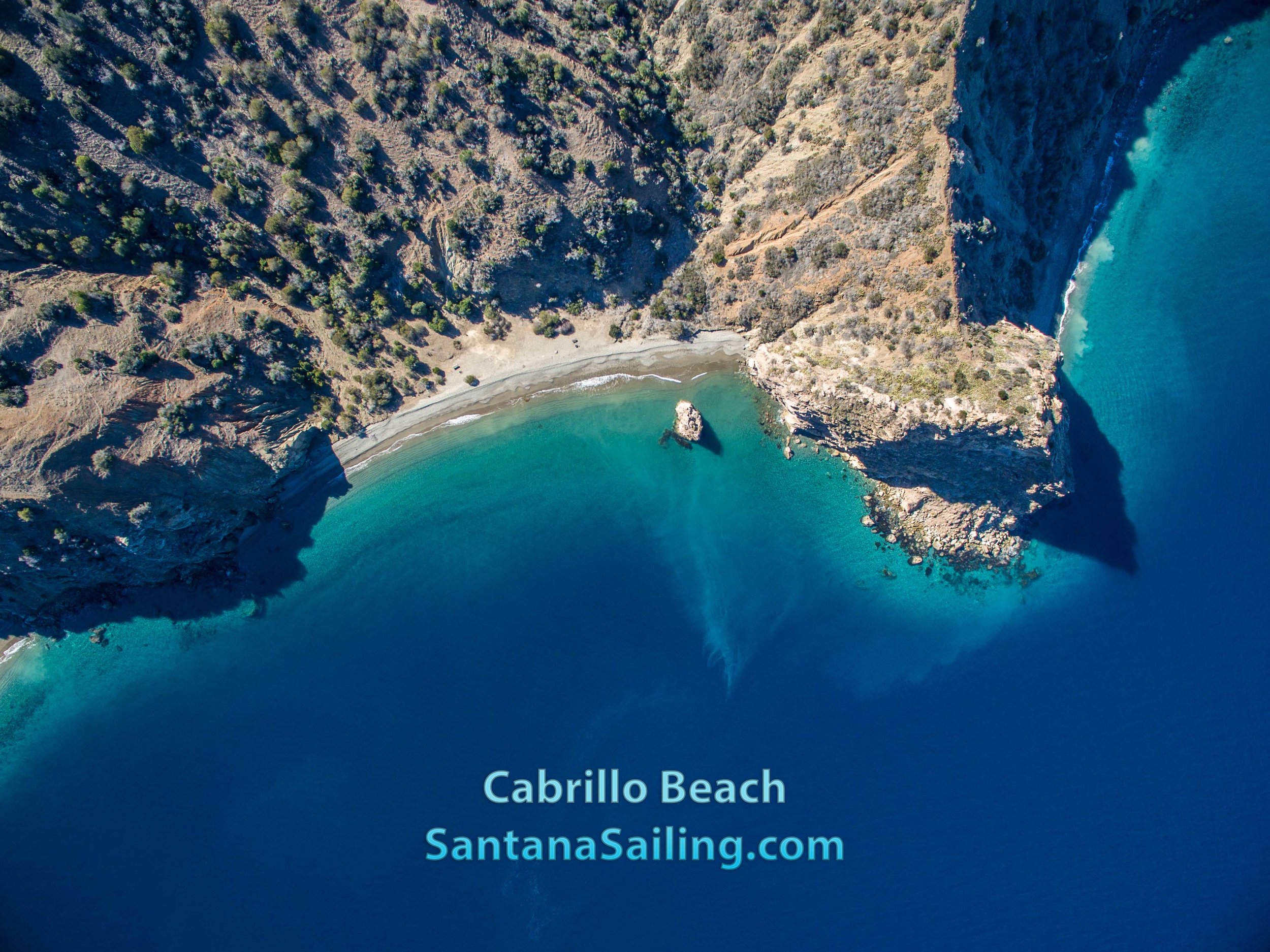Learning the Basics
I’m a boat owner. So, I am either going to learn how to do some basic maintenance myself or rob a bank to have a professional do it. Since I don’t look so good in black masks, I decided to give it a shot with my Captain standing by to help. It never hurts to have some muscles in the vicinity!
Armed with wonderful step by step instructions on how to change the oil on the Universal M25 XP (thank you Steve and Rebecca of Reality Check I had my list and my supplies ready to go! What made this job easy was having the right tools on hand! We have the oil collector from West Marine, a container to put the old oil to dispose of properly, and probably the most important item was having the adjustable wrench to get the old oil filter off!
Always a tight squeeze…
Success in Maintenance
This was an exciting moment for me because being successful in maintenance on the boat is so fulfilling and I love learning the skills associated with boat ownership. After successfully changing the oil filter and putting new oil in, it was time to discover where the pencil anode for the heat exchanger was and also how to get the transmission bolt out to check the transmission oil. Now, for you ole’ salts this may seem like some pretty basic stuff, but for a woman who is fairly new to sailing and boat ownership, this is huge accomplishment. The Captain is pretty darn happy too! How nice to be able to have your partner enthusiastically help with simple boat maintenance.
Create a Maintenance Log
I am of the thought that staying on top of things like changing pencil anodes, oil, fuel filters, etc., will definitely help avoid unnecessary problems. I have created a maintenance log for all areas of the boat that need to be checked on a monthly basis as well as things needing attention biannually, from the engine, to the deck, to the rigging, to the cabin. While there will undoubtedly be some issues that will require outside help, I am excited to be able to do general maintenance, give our girl some TLC and to learn more about her working parts! It’s taken some time to study and figure out exactly what parts to order, but every day I am growing in knowledge and that is cool, yet, still so much to learn.
Massage to Follow
Next projects? Taking off the heat exchanger, changing the fuel filter, buffing and waxing the hull – And then maybe a full body massage!
Chrissie - First Mate







